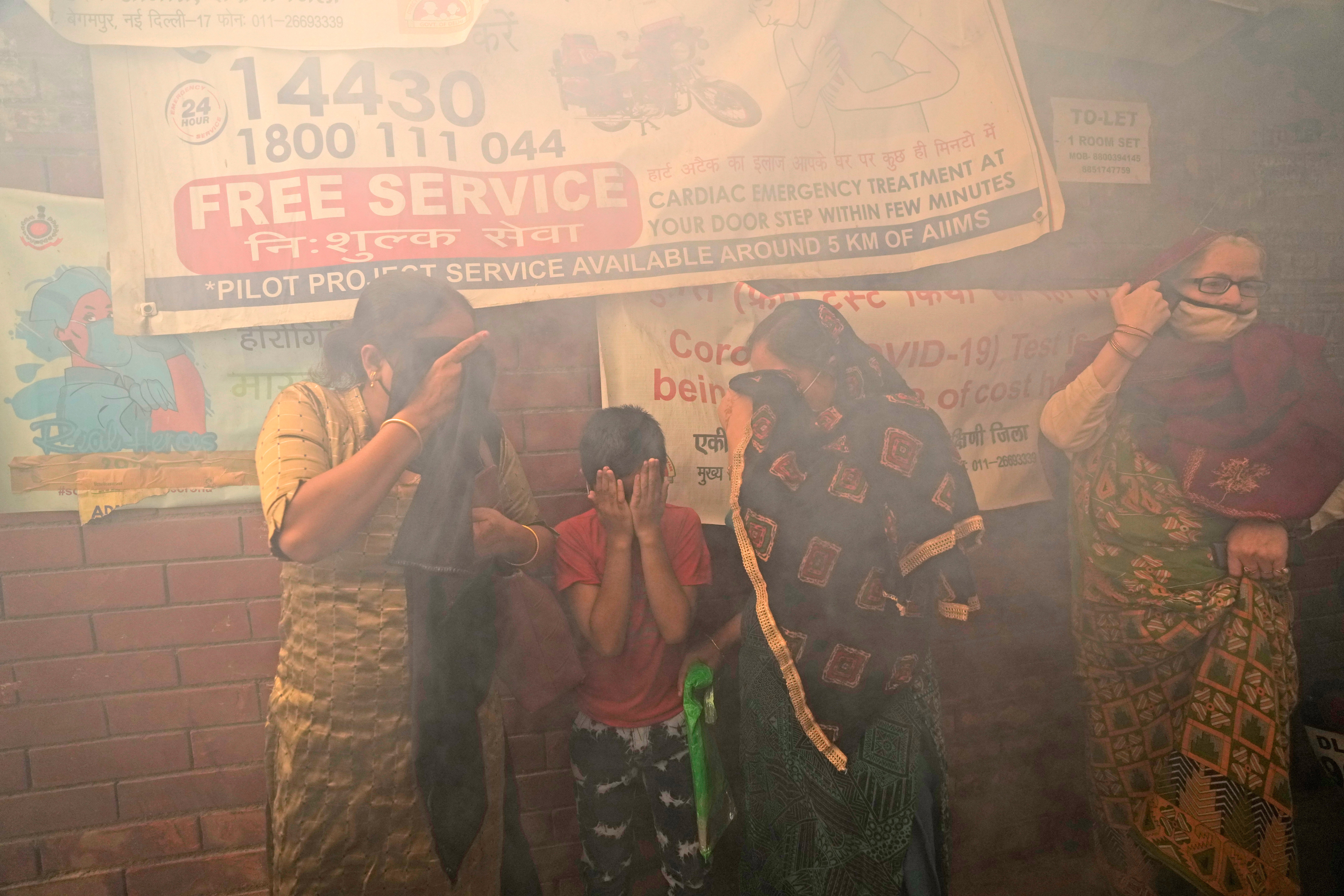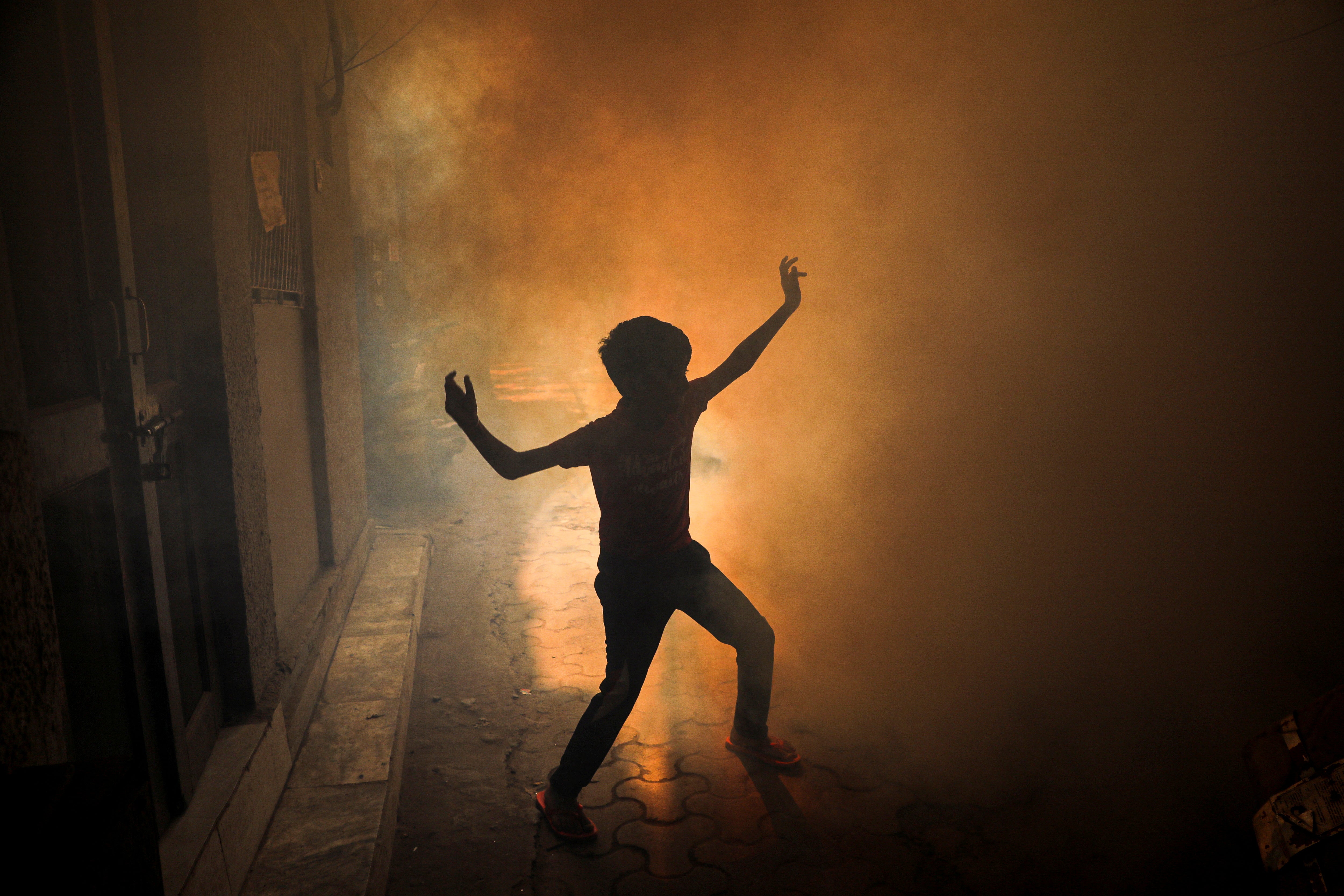After the brutal Covid second wave, Delhi now faces a dengue fever health crisis
Dengue cases have hit a three-year high in the Indian capital, reports Sravasti Dasgupta

Six months after a deadly second wave of Covid devastated Delhi and left the healthcare system staggering, India’s capital is dealing with another health crisis: a sudden outbreak of dengue fever.
A record number of cases have been reported over the past few weeks in the city, and public healthcare officials and municipal authorities toldThe Independent of their concerns over the sudden surge.
On Monday, dengue cases in the city crossed the 2,000 mark, the highest in three years, while the death toll touched a four-year high with nine casualties, according to reports.
Dengue is a vector-borne disease, caused by a virus and transmitted through Aedes mosquito bites. The monsoon months are known for an outbreak of dengue fever as mosquitoes breed easily in the damp weather coupled with stagnant rainwater around households and roads.
Officials say that the record surge this year has been fuelled by a combination of a different strain to the one that has predominated in recent years, a delayed and extended monsoon, and poor drainage systems.
Weekly data compiled and shared by the South Delhi Municipal Corporation (SDMC), the agency coordinating the prevention and control of vector-borne diseases, reveals that Delhi recorded a total of 2,708 cases of dengue fever as of 6 November.
The current surge is worrying because 2021’s tally up to and including the first week of November has already doubled 2020’s tally.
The death toll has also seen a sharp rise this year, with nine fatalities recorded as of 6 November — the highest in four years.
In comparison, one death was reported in 2020, and just two in 2019.
Behind this year’s surge lies a strain of the disease that hasn’t been seen in the city in a few years, say public healthcare professionals.
There are four strains of dengue, which appear in cyclical order annually, although a single strain can reappear in consecutive years.
“What we are seeing in Delhi is type 2 strain of dengue. This strain hasn’t been seen in a few years, which is why it is impacting many. Infections this year include reinfections and those who haven’t been infected before,” says Dr Sanjay K Rai, a professor at the Centre for Community Medicine, All India Institute of Medical Sciences.
While the severity of all four strains is similar, the severity of the disease is greater when a person is reinfected.
“Immunity from one strain does not ensure protection from other strains. If a person who has been infected before by a particular strain gets infected again by a different strain, then the severity of the disease will be higher as the body will generate a hyperimmune response,” Dr Rai says.
“Since the type 2 strain hasn’t been seen in a few years, the pool of susceptible population is much wider,” he adds.

With the record increase, hospitals are witnessing long queues of suspected patients.
Hospitals say that at least 100 patients have been walking in daily over the course of the last few weeks.
“In the last week of October, we saw 150 patients every day. Of these, more than 50 per cent had to be hospitalised,” says Dr Rajesh Kalra, additional medical superintendent at Guru Teg Bahadur Hospital, one of the largest Delhi government-run facilities.
However, doctors say that while hundreds of fever patients have been coming in, not all require hospitalisation.
“They are tested and, according to the severity of their symptoms, we admit them,” says Dr Suman Kumari, medical superintendent at the Delhi government-run Deep Chand Bandhu Hospital.
Last week, the Delhi government directed hospitals to divert one-third of their dedicated Covid-19 beds to dengue patients.
“There might be a delay in admitting patients, as there are hundreds coming in with fever and being tested. Or there may be cases where we have refused admission because their disease wasn’t severe enough to require hospitalisation. But we haven’t turned away any patients due to the shortage of beds. Of our total 1,400 beds, 900 are occupied – so we have enough beds now,” says Dr Kalra.
Doctors say the experience of Covid-19 equipped them to act fast and ensure bed availability for dengue patients. “We earmarked 400 beds for dengue and 700 beds for Covid. Different fever wards have been created to cope with the surge,” Dr Saxena says.
Officials have said the government will send a central team of experts to aid dengue management.
The row has become political with the Aam Aadmi Party (AAP), which is in power in Delhi, facing allegations from municipal bodies run by the opposition Bharatiya Janata Party that it failed to act in time to contain the outbreak.
The SDMC mayor, Mukesh Suryan, says: “While it is true that Delhi has recorded the highest rainfall in decades this year, which is why we were expecting a higher number of cases, the AAP government hasn’t done anything to prevent the outbreak.”
“They haven’t cleaned the drains they have dug up all the roads in smaller colonies, which makes it even more difficult for water to recede. They have spent Rs 300 crores (£29.8m) on government ads but not used that money to employ more cleaning personnel, or buy more fogging machines,” he adds.
The Independent has reached out to Delhi’s director general of health services, Dr Nutan Mundeja, and the AAP spokesperson Raghav Chadha for comment.
Last week the Delhi health minister, Satyendar Jain, said the situation was under control and gave assurances that there were enough beds. He added that a majority of the cases have come from outside the city.
The rising number of cases have stretched healthcare workers who have barely recuperated from the onslaught of the second Covid wave.
“We are thankful that this surge did not come during the peak second wave months. Because Covid cases are low, we are managing,” says Dr SP Byotra, the chairman of Sir Ganga Ram Hospital, one of the major private hospitals in the city.
Experts say the surge presents an opportunity for governments to focus on the need to expand the pool of healthcare workers. “The same pool of health workers, right from ASHA [accredited social health activists] workers to doctors and nurses in hospitals, were working day and night during the second wave and they are the same people working now,” says Dr Rai.
“We need to segregate and distribute our resources and not focus only on Covid or any other single disease. There is a need to ensure proper planning,” he adds.






Join our commenting forum
Join thought-provoking conversations, follow other Independent readers and see their replies
4Comments